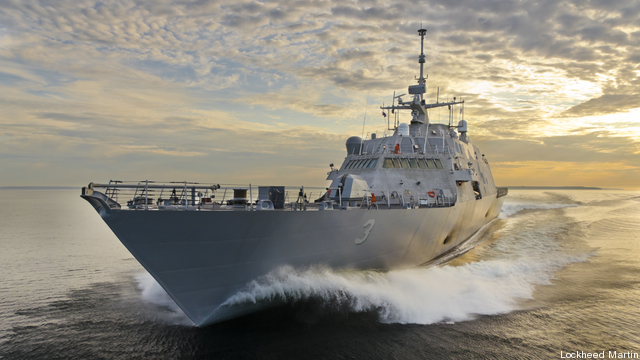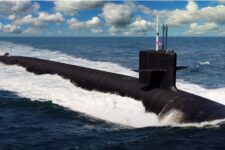
The Navy declared LCS-1 Freedom “fit for service” yesterday and on track for next year’s deployment to Singapore, while lead contractor Lockheed Martin says LCS-1’s shortfalls are largely fixed in the redesigned LCS-3, Fort Worth — but watchdog group POGO, whose reports have fueled Congressional skepticism, still has its doubts.
“Earlier this month we have this pre-inspection that gets a red on half the things, no-go,” said Ben Freeman, lead Littoral Combat Ship researcher at the independent Project On Government Oversight, in an interview with Breaking Defense. “Suddenly everything’s okay and it’s fit for service. I can’t imagine that the ship magically got fixed in three to four weeks, but apparently, if we believe the Navy, it did.”
Defense News reporter Christopher Cavas, one of the media’s leading naval experts, detailed some of the unresolved issues in an article published online last night: One of the ship’s four engines didn’t function, the hull leaks where the anchor chain comes out, and the system to launch small boats — via a stern door that’s proven leaky — simply didn’t work at all. All told, the Navy conducted three days of what’s normally a five day sea trial and did 180 of the normal 212 inspections, Cavas reported.
As for cracks in the hull, an issue highlighted by POGO’s past reports, “they said they didn’t identify cracking during the test,” said Freeman, “[but] they may not have found the cracks yet…. Those first cracks weren’t found immediately.”
The official Navy announcement acknowledges that LCS-1 still faces “challenges” but says problems are to be expected with the first ship of a new design. “Deficiencies are historically common for a first-of-class ship and it is expected the Navy will discover and correct them as they are identified,” said Naval Surface Forces commander Vice Adm. Richard Hunt. “Those findings are then folded back into the other ships in the class.”
The next ship in Freedom’s class is LCS-3, the Fort Worth. (The odd-numbered Littoral Combat Ships are being built by Lockheed Martin and Marinette Marine, while even-numbered LCSs are being built by General Dynamics and Austal to a completely different design that hasn’t had as many problems).
Lockheed spokesman Keith Little offered “a litany” of improvements to the design. To start with, the contractors have completely redesigned LCS-1’s leaky back door and its associated handling equipment to launch and retrieve small boats and unmanned craft. A redesigned window improves visiblity from the bridge. LCS-3’s hull is longer, which not only makes the ship more stable — LCS-1 had to have buoyancy tanks jury-rigged onto its stern — but also lets it carry 10 percent more fuel and even increases its cruising speed. LCS-3 even has a redesigned anchor housing. Lockheed has another 10 LCS ships on contract to get it right.
Corrected at 11:30 pm. An earlier version of this article incorrectly stated that the anchor housing on LCS-3 still leaked.
‘Mind-boggling’: Israel, Ukraine are mere previews of a much larger Pacific missile war, officials warn
MDA Chief Lt. Gen. Heath Collins said more maneuverable missiles and drones have changed the missile defense game: Instead of just preparing to hit “fastballs,” he said, “now we’re hitting sliders and curveballs.”



























